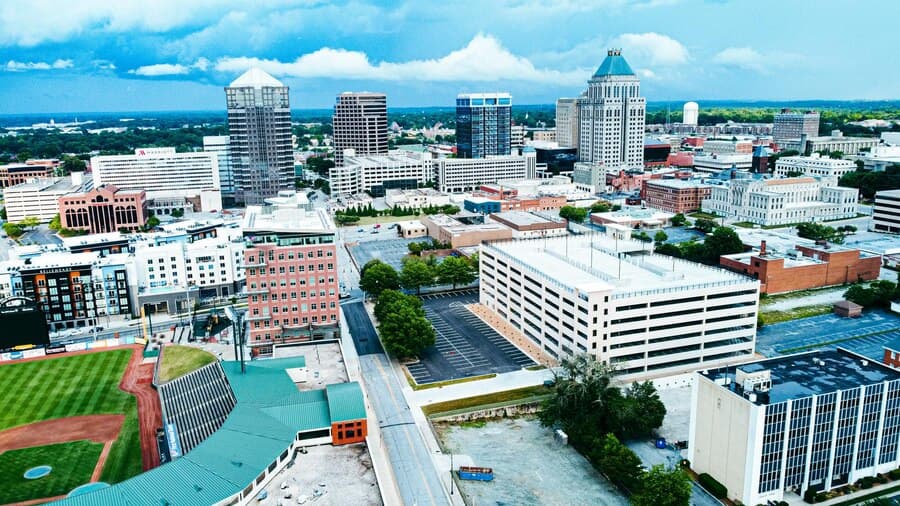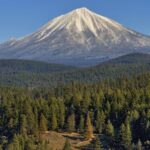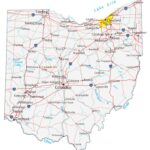
Embarking on a comprehensive exploration of Oklahoma’s 10 largest cities by population, this article delves into the economic and cultural factors propelling their growth. From dynamic urban centers to flourishing suburbs, each city unfolds a distinct tapestry of opportunities and community vitality.
Oklahoma City: The State Capital
Oklahoma City, the largest in the state, has witnessed a substantial population surge of 8.2% over the last five years, reaching approximately 655,000 residents. The city’s economic boom in sectors like energy, healthcare, and technology has attracted a continuous influx of professionals.
Notable cultural attractions, including the Oklahoma City Museum of Art and the vibrant Bricktown Entertainment District, contribute significantly to its allure.

Oklahoma City’s economy has experienced robust growth, with the energy sector, particularly oil and natural gas, playing a pivotal role. The city’s strategic location as a transportation hub further enhances its economic significance, fostering both local and international trade. This economic prowess is a driving force behind the city’s population upswing.
The Oklahoma City Museum of Art stands as a cultural beacon, showcasing a diverse range of artistic expressions. Bricktown, with its lively entertainment venues, waterfront activities, and dining options, adds to the city’s charm.
Tulsa: Where Culture Meets Commerce
Tulsa, the second-largest city, boasts a population of around 410,000, reflecting a commendable growth rate of 5.6% in the last five years.
A diverse economic landscape that includes finance, aerospace, and healthcare continues to draw residents seeking professional opportunities.
Cultural attractions, such as the Philbrook Museum of Art and the expansive Gathering Place, further amplify Tulsa’s dynamic growth.
- Economic Diversity: Tulsa’s economic resilience is evident in its diverse sectors, with finance, aviation, and healthcare contributing substantially to its growth. The city’s commitment to fostering a business-friendly environment has led to the establishment of corporate headquarters and a burgeoning entrepreneurial scene, driving both job creation and population growth;
- Cultural Enrichment: The Gathering Place, a unique public park, offers recreational activities and community engagement. Tulsa’s focus on blending commerce with culture creates a well-rounded environment for residents and newcomers alike.
Norman: Education Hub of the State
As the third-largest city with a population of approximately 125,000, Norman has experienced a growth rate of 4.1% driven by its role as an education hub.

The University of Oklahoma significantly influences the city’s economy and population influx. Norman’s commitment to education and cultural events, like the Medieval Fair and Jazz in June, enhances its appeal.
The University of Oklahoma, a leading educational institution, anchors Norman’s status as an academic hub. The presence of a renowned university not only attracts students but also fosters a diverse and intellectually vibrant community. Collaborations between the university and local industries contribute to the city’s economic and educational prowess.
Broken Arrow: A Growing Suburban Gem
Broken Arrow, the fourth-largest city, has experienced remarkable growth, with a population of around 116,000 and a growth rate of 6.8%. Situated in the northeastern part of the state, its proximity to Tulsa and a thriving business environment, including retail and manufacturing, makes it a magnet for families seeking a suburban lifestyle.
Top-rated schools and recreational amenities further contribute to the city’s popularity.
Broken Arrow’s growth is underlined by its status as a flourishing suburban gem. Families are drawn to the city’s well-planned communities, offering a balance between residential tranquility and easy access to urban amenities. The presence of retail hubs and diverse recreational options enhances the city’s allure, creating a vibrant suburban lifestyle.
Lawton: A Military Hub with Historical Roots
Lawton, the fifth-largest city, has a population of approximately 97,000, reflecting a growth rate of 3.2%. As home to Fort Sill, Lawton’s economy is closely tied to the military. The city’s historical sites, including the Museum of the Great Plains, add cultural richness, contributing to its steady population growth.
- Military Influence: Fort Sill’s presence establishes Lawton as a significant military hub, fostering economic stability and employment opportunities. The military influence extends beyond the base, creating a unique dynamic in the city’s culture and population composition. Lawton’s commitment to supporting military personnel contributes to its role as a vital military community;
- Cultural Heritage: Lawton’s historical sites, exemplified by the Museum of the Great Plains, offer residents and visitors a glimpse into the region’s rich history.
Learn more about Oklahoma with this map
Edmond: Balancing Growth and Community
Edmond, the sixth-largest city with a population of around 96,000, has seen a growth rate of 5.5%. Known for its balanced approach to growth and community cohesion, Edmond offers economic opportunities in sectors like finance and technology.
Green spaces, cultural activities, and top-notch public schools make it a sought-after residential destination.
- Economic Opportunities: Edmond’s economic landscape is characterized by a strategic balance, fostering growth without compromising community values. The city attracts businesses in finance, technology, and healthcare, contributing to a robust job market. Edmond’s commitment to sustainable economic development creates a stable and prosperous environment for its residents;
- Community Cohesion: Edmond’s emphasis on community cohesion is reflected in its well-maintained green spaces, such as E.C. Hafer Park and Arcadia Lake. These areas provide recreational spaces for residents, fostering a sense of community and well-being. The city’s dedication to cultural activities and events further enhances its community-driven atmosphere, making Edmond a desirable place to live.
Moore: Resilience and Development

Moore, the seventh-largest city with a population of approximately 64,000, has experienced steady growth at a rate of 4.9%. Following the devastating tornado in 2013, Moore demonstrated resilience in rebuilding its infrastructure and community.
The city’s commitment to development is evident in its economic revitalization projects, with the Warren Theatre and Moore Norman Technology Center contributing to its cultural landscape.
Moore’s economic resilience is reflected in its diversified sectors, including retail, healthcare, and technology. The Warren Theatre, a prominent entertainment venue, symbolizes the city’s commitment to cultural development.
With a strategic focus on economic revitalization, Moore has attracted businesses, contributing to job growth and community prosperity.
Midwest City: From Aerospace to Community Pride
Midwest City, the eighth-largest city, is home to around 58,000 residents, reflecting a growth rate of 3.6%. As a significant player in the aerospace industry, thanks to Tinker Air Force Base, the city’s economic stability has attracted a diverse population. Midwest City takes pride in its community engagement, evident in events like the Rose State College Hudiburg Chevrolet Center performances.
- Aerospace Industry Impact: Midwest City’s identity is closely tied to its role in the aerospace industry, with Tinker Air Force Base serving as a major economic driver. The city’s strategic location and contributions to national defense create a stable economic foundation. Residents benefit from job opportunities and a supportive community atmosphere;
- Community Pride: Midwest City fosters community pride through events like performances at the Rose State College Hudiburg Chevrolet Center. These cultural activities contribute to a sense of identity and shared experience among residents. The city’s commitment to both economic development and community engagement solidifies its position as a vibrant and resilient urban center.
Enid: Agriculture, Commerce, and Community
Enid, the ninth-largest city with a population of approximately 52,000, has witnessed a growth rate of 2.8%. Known for its agricultural roots, Enid has diversified its economy to include healthcare, manufacturing, and energy.
The city’s commitment to community development is evident in projects like the Enid Event Center and the David Allen Memorial Ballpark.
- Agricultural Heritage: Enid’s historical connection to agriculture remains integral to its identity. The city’s economic diversification, while maintaining ties to agriculture, reflects a strategic approach to growth. Enid’s commitment to preserving its roots contributes to a unique blend of tradition and modernity;
- Community Development Initiatives: Enid’s investment in community development projects, such as the Enid Event Center and the David Allen Memorial Ballpark, enhances the city’s appeal. These facilities provide residents with cultural and recreational opportunities, fostering a sense of community pride.
Enid’s commitment to balanced growth creates a well-rounded living experience for its residents.
Stillwater: The College Town Charm
As the tenth-largest city, Stillwater is home to approximately 50,000 residents, experiencing a growth rate of 3.1%. The presence of Oklahoma State University contributes significantly to the city’s youthful energy and cultural diversity.
Stillwater’s economic stability, driven by agriculture and technology, adds to its charm, with attractions like the Boone Pickens Stadium and the National Wrestling Hall of Fame enhancing its cultural landscape.
- University Influence: Oklahoma State University plays a central role in shaping Stillwater’s character as a college town. The university brings in a diverse student population, contributing to the city’s youthful vibrancy and cultural diversity. Academic initiatives and research efforts further enhance Stillwater’s standing in the education sector;
- Cultural Landmarks: Stillwater’s cultural landscape is enriched by landmarks like the Boone Pickens Stadium, a focal point for sports enthusiasts. The National Wrestling Hall of Fame adds a unique cultural dimension, celebrating the city’s contributions to the sport.
Conclusion
The exploration of Oklahoma’s 10 largest cities provides a nuanced understanding of their economic, cultural, and community dynamics. Over the past five years, these cities have showcased significant population growth rates, ranging from 2.8% to 8.2%, reflecting the state’s allure for those seeking diverse opportunities and a high quality of life.
From the bustling urban hub of Oklahoma City to the charming college town of Stillwater, each city contributes uniquely to the state’s dynamic tapestry. The economic sectors, cultural attractions, and community initiatives presented in this article offer a comprehensive overview of what distinguishes each city.
Last modified: February 29, 2024

